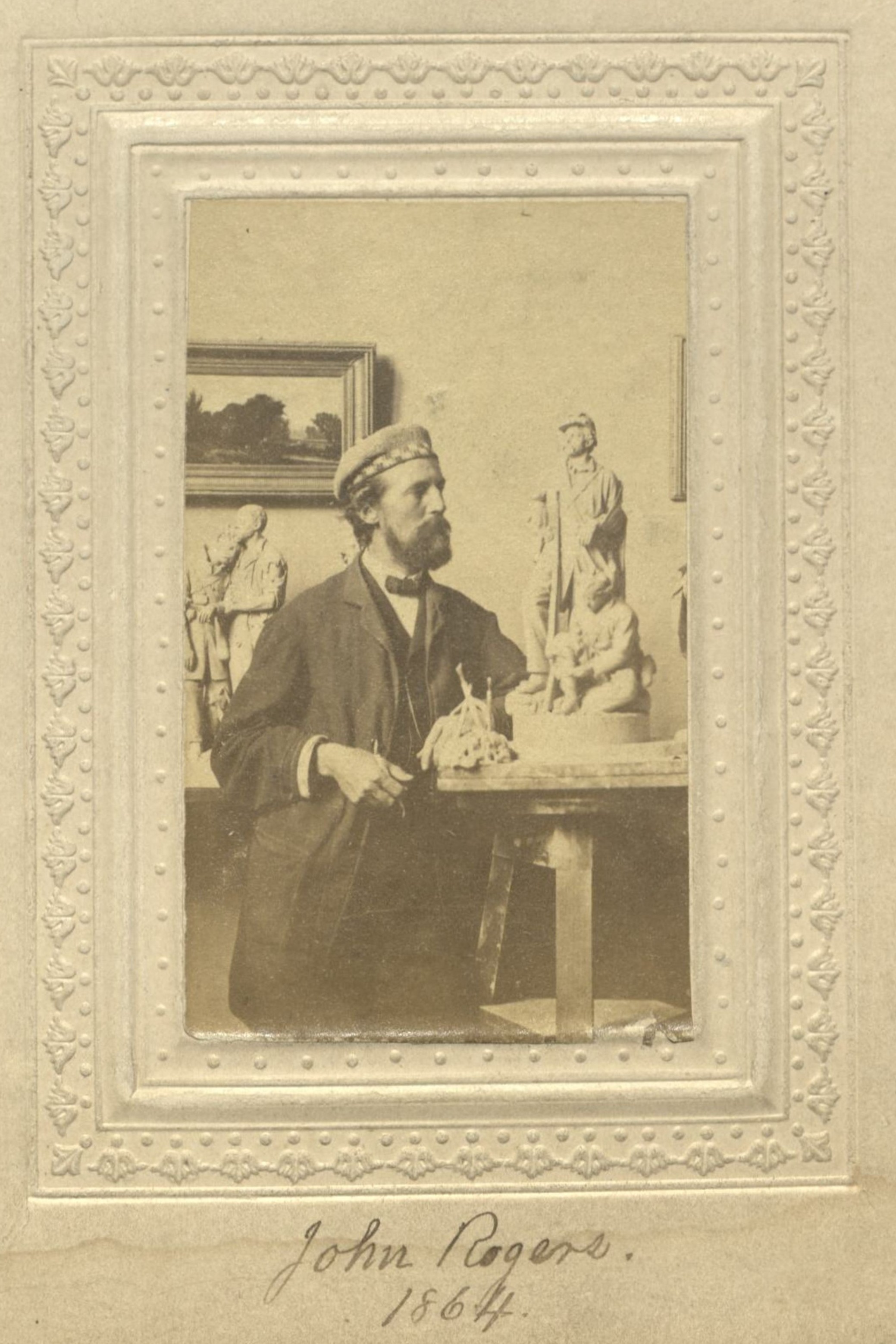Sculptor
Centurion, 1864–1904
Born 30 October 1829 in Salem, Massachusetts
Died 26 July 1904 in New Canaan, Connecticut
Buried Lakeview Cemetery , New Canaan, Connecticut
, New Canaan, Connecticut
Proposed by Augustus R. Macdonough
Elected 12 November 1864 at age thirty-five
Archivist’s Note: He ostensibly resigned in 1865 and was reinstated in June 1887 with a new set of proposers, Gustavus Tuckerman and Thomas W. Wood.
Century Memorial
John Rogers was elected to The Century somewhat late in life [sic: his first election to the Century was in 1864; he resigned in 1865 and in 1887 he was reelected with new proposers], and it was only for a half-score years that his commanding form and genial presence were known in our rooms. But he was for the greater part of his long life a prominent and original personality in the artistic circles of the city. He had the varied experience and versatile capacity of the native Yankee. Born in Salem, Mass., in 1829, he was successively merchant’s clerk, machinist, sculptor, surveyor, and again sculptor. To the latter occupation, for which his “call” was unmistakable, he came late; his first attempt being made at the age of thirty. He spent a year abroad in Paris and Rome, but when he returned to this country in 1860 he took up the practice of surveying, feeling his way in art rather timidly. A little group, “The Checker Players,” brought him sudden and unexpected popularity. Then came the Civil War and opened a rich field for his peculiar talent. No other artist, perhaps not all others, can be said to have been so intimately associated with the intense feeling of the time, or so happily or fully to have expressed it. His compositions, multiplied in plaster, were found in thousands of homes the land over. From “The Slave Auction,” in 1860, the last year of peaceful agitation of the mighty issue, with which the republic was in travail, through numerous episodes of the war like “One More Shot,” “The Wounded Scout,” &c., to the scene of reconstruction in “Taking the Oath” and of the rescue of the blacks from ignorance only less oppressive than slavery in “Uncle Ned’s School,” Rogers’s penetrating sympathy with the deep pervading sentiment made him a remarkable exponent of his time. Later he undertook larger work, such as the equestrian statue of General [John Fulton] Reynolds in Philadelphia, but it is by these intimate compositions, most of which were cast in bronze, and by like ones dealing with simple popular life, that he was most widely known, and by which his memory will live.
Edward Cary
1905 Century Association Yearbook

